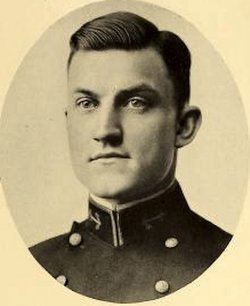Nickname(s) Sockem Name Apollo Soucek Rank Vice Admiral | Years of service 1918–1955 Allegiance United States | |
 | ||
Commands held Fighter Squadron 2USS Franklin D. Roosevelt (CV-42)Carrier Division 3/Task Force 77 Battles/wars World War IWorld War IIKorean War Died July 25, 1955, Washington, D.C., United States Battles and wars | ||
Apollo Soucek (February 24, 1897–July 22, 1955) was a vice admiral in the United States Navy, who was a record-breaking test pilot during 1929-1930, served in World War II, and was commander of Carrier Division Three during the Korean War, ending his career as Chief of the Bureau of Aeronautics.
Contents

Biography
Soucek was born in Lamont, Oklahoma. He was the son of Johann "John" Soucek, who had been born in Ovčáry, Bohemia (then part of the Austria-Hungary, now in the Czech Republic), but had emigrated to the United States at the age of 7 with his family. Arriving in June 1875 aboard the Norddeutscher Lloyd ship SS Ohio, the family—Mathias, Maria, and their six children—first settled in Nebraska, then moved to Kansas, before taking part in the Cherokee Strip Land Run in 1893, and settling in Medford.
Early career
Soucek entered the United States Naval Academy in 1918 and served with the rank of Midshipman aboard the battleship Missouri (BB-11) during World War I. He was commissioned as an Ensign on 3 June 1921. He then served aboard the Mississippi (BB-41). In February 1924 Soucek reported to Naval Air Station Pensacola for flight training, qualifying as a Naval aviator in October. He was assigned to the Navy's first aircraft carrier Langley (CV-1) in November, and served as Assistant Flight Officer of Observation Squadron 2. In January 1925 he transferred to the Maryland (BB-46) to serve as Assistant Navigator and Junior Aviation Officer of Observation Squadron 1. In May 1927 he was assigned to the Naval Aircraft Factory in Philadelphia, before transferring to the Bureau of Aeronautics in July to serve in the Power Plant Design Section.
Flying the Wright Apache Soucek set a series of flight altitude records. On May 8, 1929, he set the world altitude record for landplanes by flying to the height of 39,140 feet (11,930 m), and on June 4, he set the altitude record for seaplanes, also in an Apache, reaching the height of 38,560 feet (11,750 m). On June 4, 1930, Soucek flew an Apache landplane equipped with a 450 horsepower (340 kW) Pratt & Whitney R-1340 radial engine to a height of 43,166 feet (13,157 m) over Naval Air Station Anacostia, regaining the world record he had held in 1929. Soucek was decorated with Distinguished Flying Cross for this flights.
In June 1930 Soucek returned to sea duty serving as Squadron Flight Officer of Fighter Squadron 3 on the carrier Lexington (CV-2), and as Gunnery Officer and Executive Officer of Fighter Squadron 3 aboard Saratoga (CV-3). In June 1932 he returned to the Naval Aircraft Factory to serve as Assistant to the Superintendent of the Aeronautical Engineering Laboratory. From June 1935 he served as Hangar Deck, Flight Deck, and Senior Watch Officer aboard Ranger (CV-4), returning to the Lexington in June 1937 to serve as the Commanding Officer of Fighter Squadron 2. Soucek went back to the Bureau of Aeronautics in May 1938 to serve as Assistant to the Chief of the Personnel Division.
World War II
In May 1940 he was assigned to Yorktown (CV-5) as Navigator, moving to the Hornet (CV-8) on 20 October 1941 to serve as Air Officer. Soucek was appointed Executive Officer in 1942, and served in that capacity during the Doolittle Raid on Tokyo on 18 April. Soucek served in this capacity aboard Hornet during the Battle of the Santa Cruz Islands. He was later decorated with Silver Star for his efforts during this battle.
In January 1943 was appointed Assistant Chief of Staff for Operations in the Pacific Fleet. From July 1943 he served as Chief of Staff and Aide to the Chief of Naval Air Intermediate Training Command and Deputy Chief of Naval Air Training, based at NAS Pensacola. Soucek was decorated with Legion of Merit with Gold Star for service in this capacity. In March 1945 he was appointed Officer-in-Charge of the fitting-out of the carrier Franklin D. Roosevelt (CV-42), becoming the first commander on her commissioning on 27 October 1945.
Later career
From January 1946 he commanded Carrier Division 14, and from August was commander of Fleet Air Wing 1. On 15 July 1947 he was appointed commander of the Naval Air Test Center at Naval Air Station Patuxent River. From 1949 he served as Assistant Chief of Naval Operations for Aviation Plans, and Director of the Aviation Plans and Program Division. He spent most of 1951 in London as U.S. Naval Attaché for Air, before serving in the Office of the Chief of Naval Operations from November until February 1952, when he was appointed commander of Carrier Division 3/Task Force 77, flying his flag aboard Boxer (CV-21), supporting operations in the Korean War. Rear admiral Soucek received Distinguished Service Medal for his service in Korea.
On 18 June 1953 Soucek was appointed Chief of the Bureau of Aeronautics, however in February 1955 he became ill, quitting his post on March 4, and was transferred to the Retired List on 1 July. He died of a heart attack on 19 July 1955, at the age of 58, and was buried at Arlington National Cemetery on 26 July.
On 4 June 1957 Naval Air Station Oceana was officially named Apollo Soucek Field.
Family
Apollo's younger brother Zeus (1899–1967), also joined the Navy, became an aviator, and set speed, distance and duration records piloting a Naval Aircraft Factory PN-12 in May 1928.
